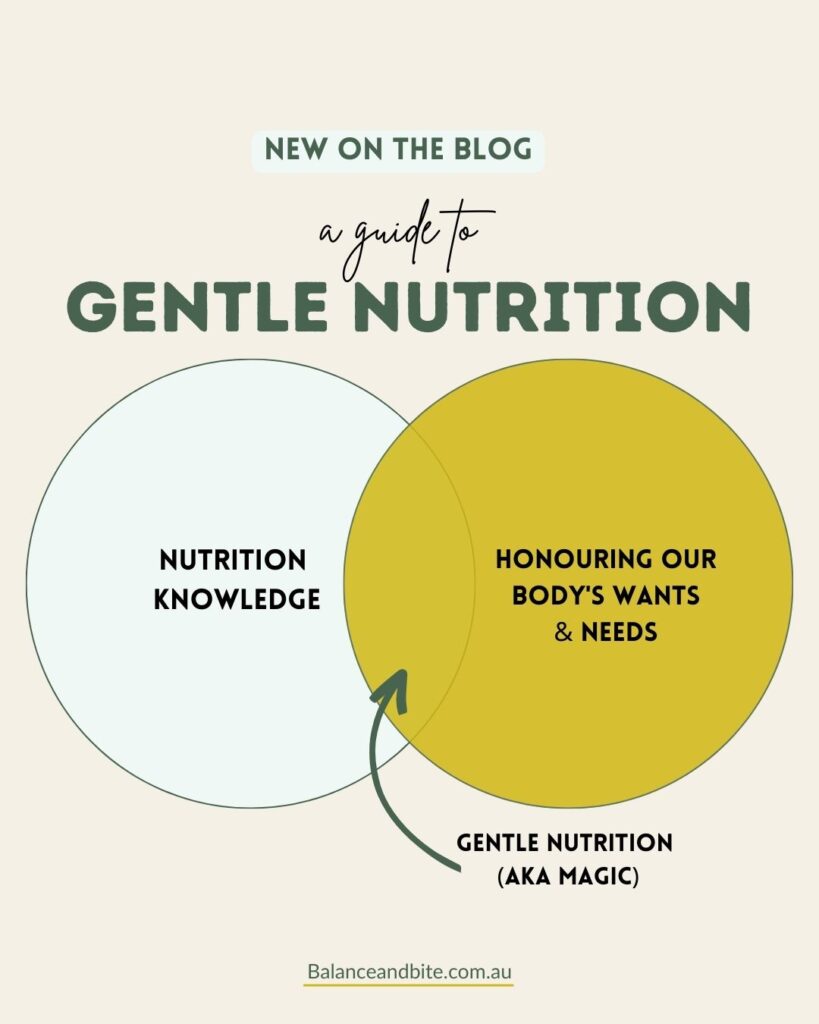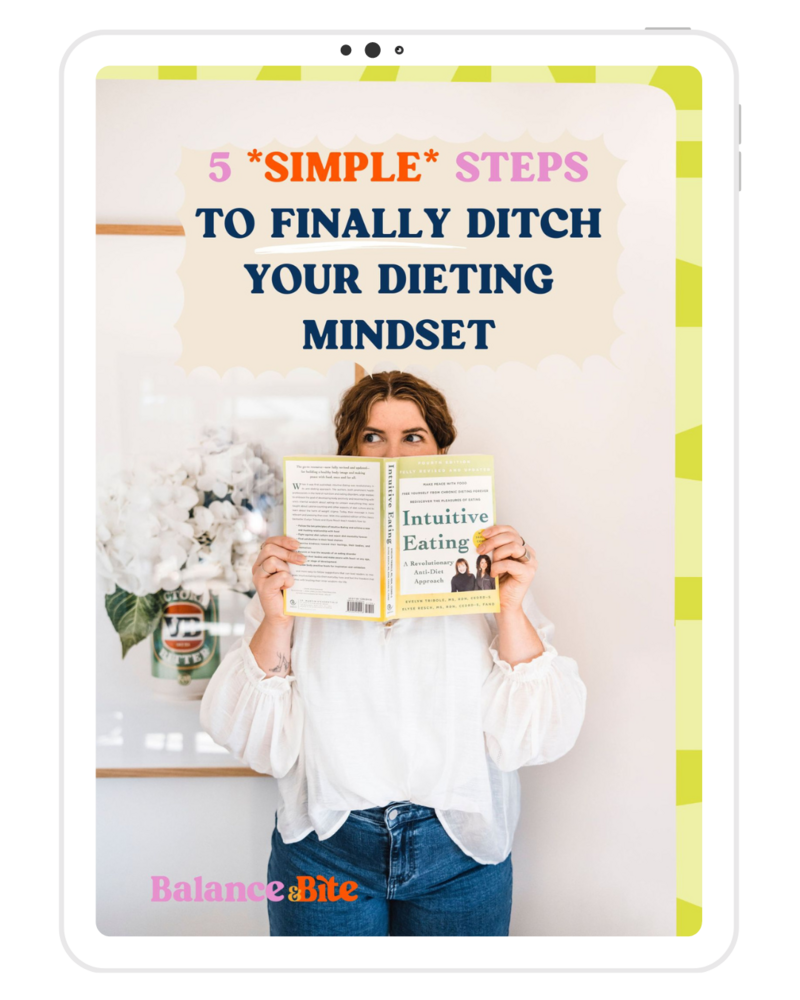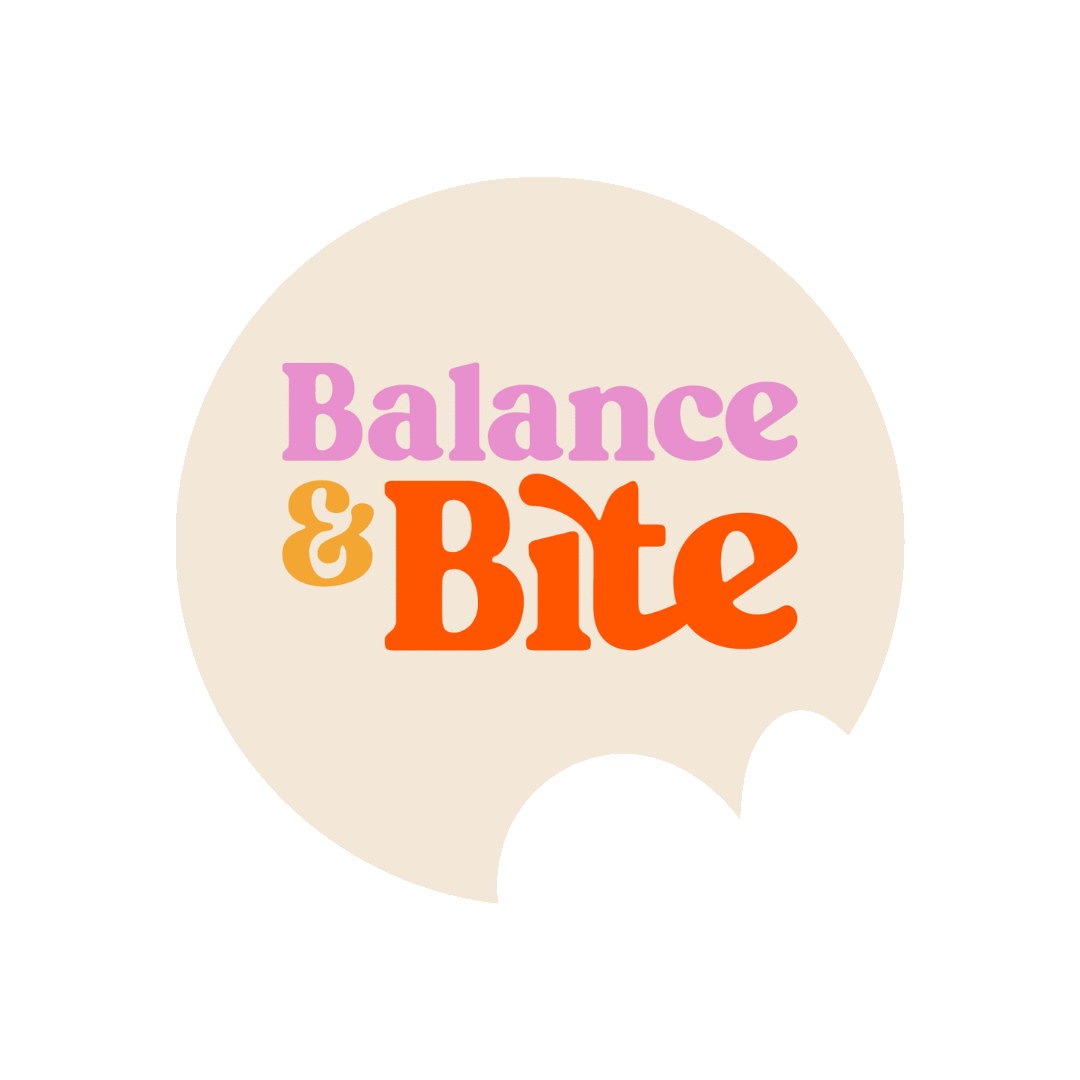What comes to mind when you think of intutive eating? Is it eating doughnuts, chocolate and chips all day and every day, without a fruit or vegetable in sight? While this is a common visualisation of intuitive eating, it’s not the case. In fact, nutrition, or gentle nutrition, is an essential component of being an intutive eater.
What is gentle nutrition?
Gentle nutrition is a non-diet and intuitive eating approach to applying nutrition information. It focuses on finding the balance between knowing what will nourish our bodies (honouring our health) and ensuring food tastes good and satisfies us. It declares that all foods (including doughnuts, chips and lollies) can fit into a healthy eating pattern. And there is no such thing as “good” or “bad” foods.
While most dieters have excellent nutrition knowledge, it’s often layered with overly rigid and restrictive rules. As a result, it’s easy to become fatigued, bored or over-hungry, leading to out-of-control eating or avoiding healthy options altogether. Gentle nutrition emphasises flexibility by removing rigid food rules, morality and restriction – making it easier to include more nutritious foods more often.
Gentle nutrition acknowledges that health is more than physical – encompassing self-care and social and emotional wellbeing.


*Gentle nutrition is dynamic. There are times in life when you will need to focus more on external cues, for example, if you’re diagnosed with a chronic disease, e.g. diabetes, high choloesterol or coeliac disease. While other times you’ll need to listen more to your internal cues, for example, if you’re recovering from surgery, have had a baby, or just going through a busy time in life.
How does gentle nutrition fit into intuitive eating?
Gentle nutrition is the last (10th) principle of intuitive eating, for a good reason. While it can feel tempting to jump straight into gentle nutrition in your intutive eating journey, repairing your relationship requires a solid foundation first.
Initially focusing on making peace with food, removing food labels like “good” vs “bad”, challenging the food police and learning to listen to hunger and fullness cues allows us to apply nutrition knowledge without restriction.
Examples of gentle nutrition
- Knowing salad is full of vitamins, minerals and fibre to support your health, but adding salad dressing, carbs, fats and protein to make it taste delicious and fill you up.
- Using oil, butter or marinades when cooking vegetables to give them more flavour
- Swapping white rice for brown rice for added fibre
- Replacing soft drinks for lower sugar options or water to help regulate your blood glucose/energy levels during the day
- Adding cottage cheese to your smoothie, dressings or baking recipes for an extra serving of protein
- Having a variety of healthy yet satisfying snacks available at home and work, e.g. nuts, hummus and crackers (or vegetables), fruit cups, muesli bars
- Swapping your afternoon chocolate and chips for a smoothie or peanut butter with vegetable sticks, if you’re noticing a regular slump in energy
- Keeping a variety of protein, carb and fat-rich foods as well as tasty condiments in the house to quickly whip up quick 5-10 minute healthy meals that taste delicious.
Gentle nutrition encourages a positive relationship with food, helping people find the balance between health and satisfaction.
Gentle nutrition is not one-size-fits-all.
While it might be recommended to swap white rice for brown rice, if you hate the taste and texture of brown rice, stick to white rice. Unlike diet culture that promotes an all-or-nothing, black-and-white dichotomy, gentle nutrition gives you flexibility. Allowing you to pick and choose the areas (and meals) of your life you want to add more food.
Questions to ask before starting gentle nutrition
- Do I view foods as equal and removed labels like “good” and “bad”?
- Can I recognise my hunger and fullness signals?
- Can I eat healthy foods without feeling deprived or like I’m going on a diet?
- Do I view my body through a weight-neutral lens?
Applying a gentle lens to nutrition information helps people include healthy food options more often. They have greater flexibility to add flavourings, seasonings and other condiments that would otherwise be banned in dieting.


Erin’s an Accredited Practising Dietitian & Certified Intuitive Eating Counsellor. She uses a non-diet approach and weight-inclusive care to help her clients reclaim a healthy relationship with food and their bodies free of guilt, shame and restriction.












View comments
+ Leave a comment